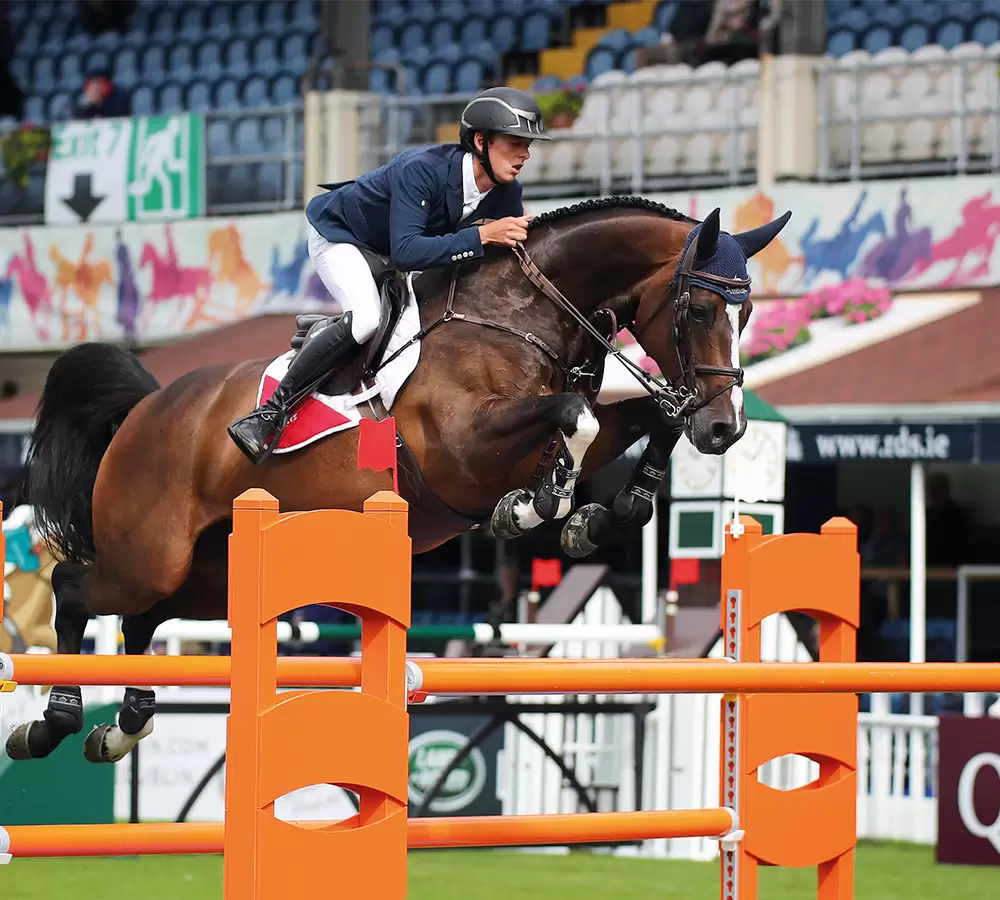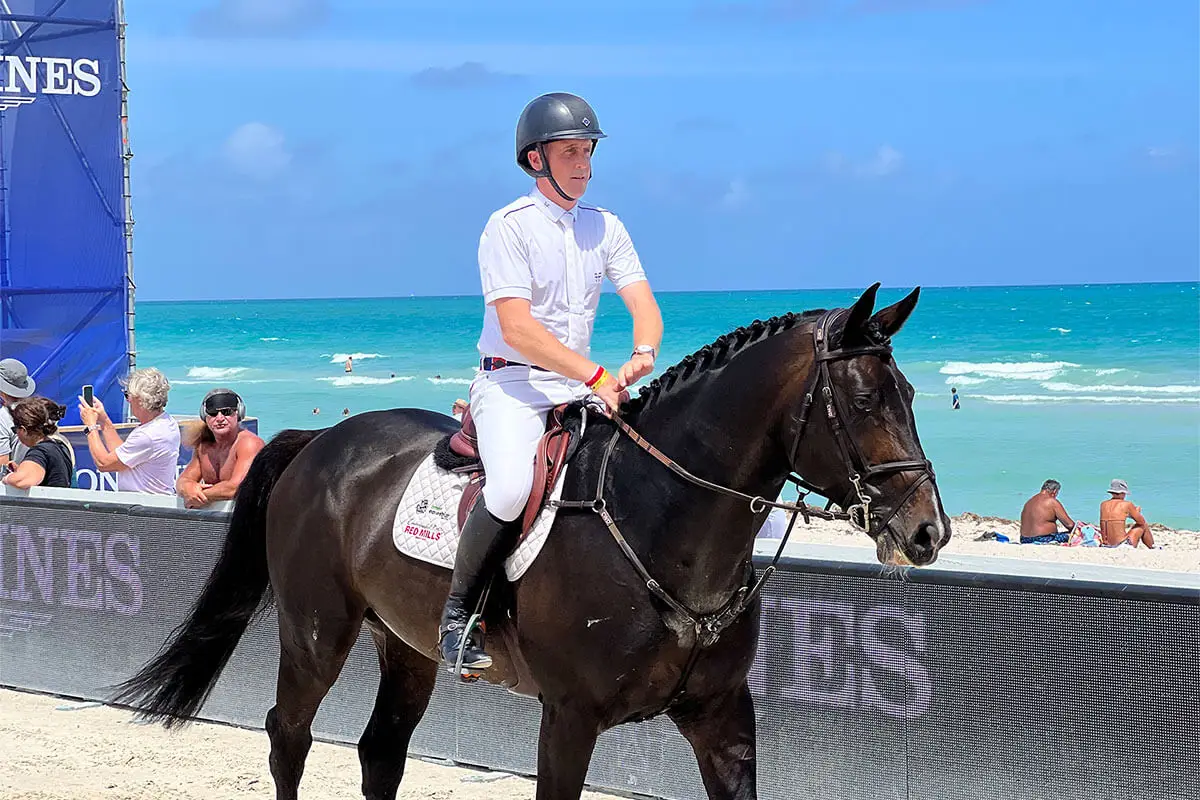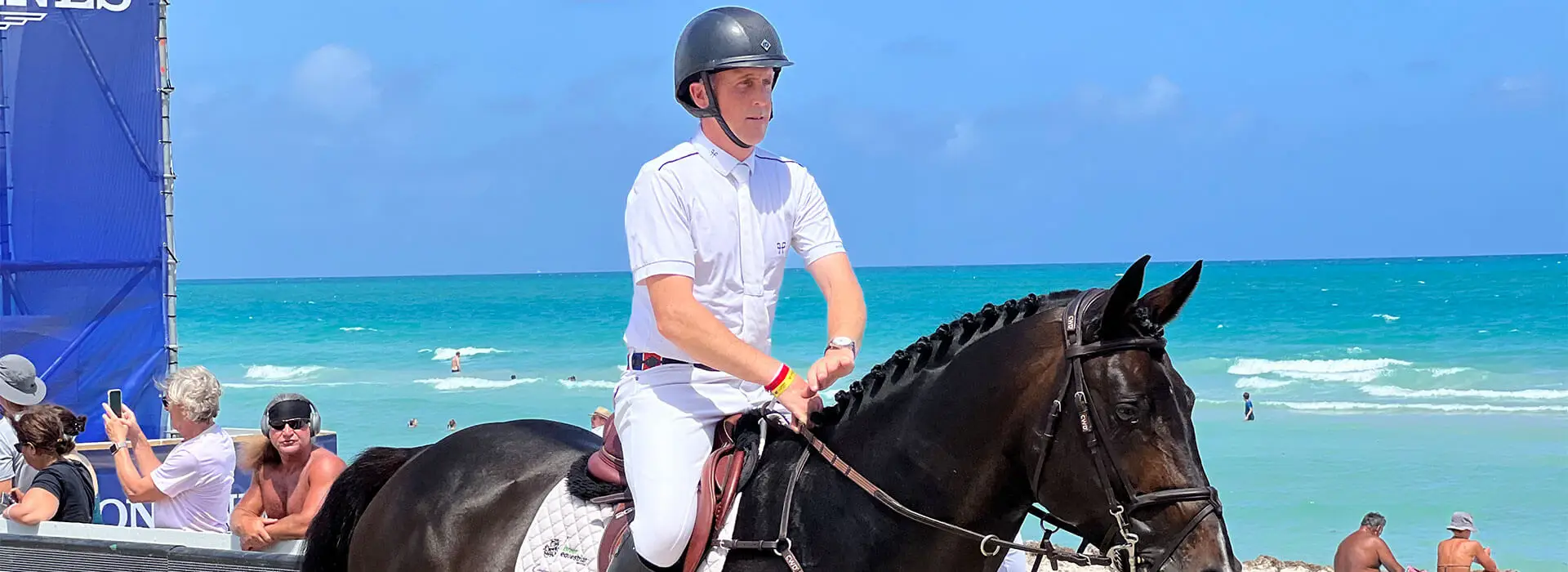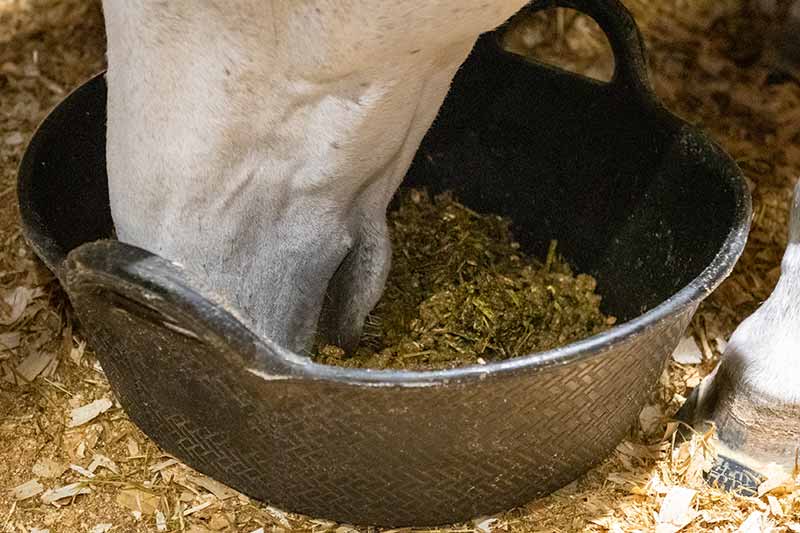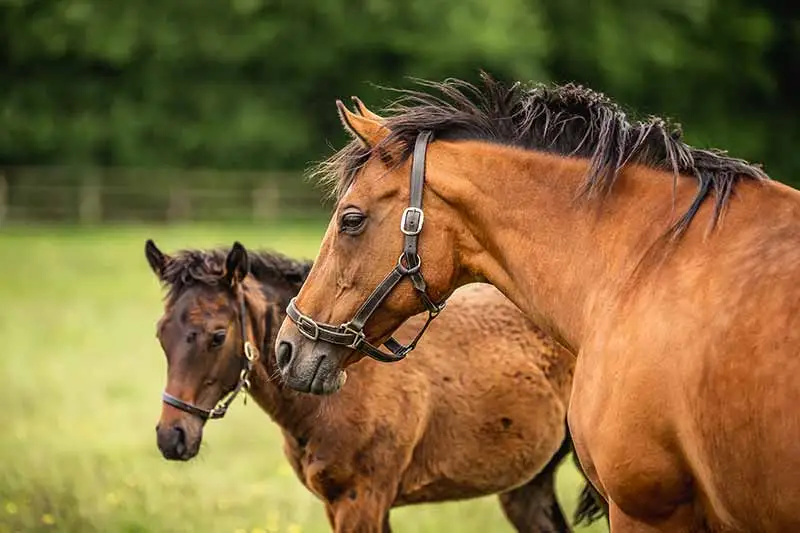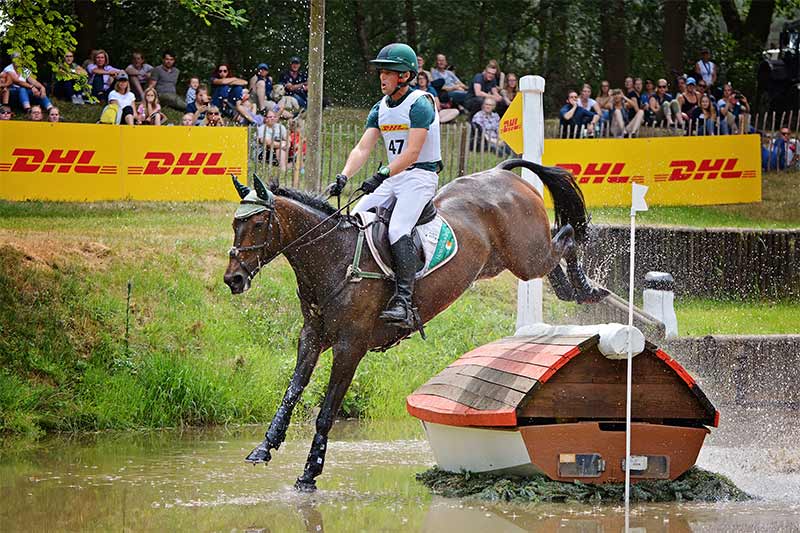
Anhidrosis is a serious problem that can develop in horses exercising in hot humid conditions. In some horses, anhidrosis will resolve spontaneously, but some individuals will require ongoing management to ensure continued athletic ability.
What is anhidrosis?
Horses with anhidrosis are unable to produce sweat normally, and are sometimes referred to as ‘non-sweaters’, ‘dry coated’ or ‘puffers’. The condition is often performance-limiting and puts affected horses at risk of hyperthermia. Partial or incomplete anhidrosis is the most common form.
Anhidrosis affects horses in hot climates and is often seen in thoroughbreds during prolonged periods of intense exercise, but it can affect any breed of horse at any performance level. It is thought to be caused by overstimulation of the sweat glands by stress hormones.

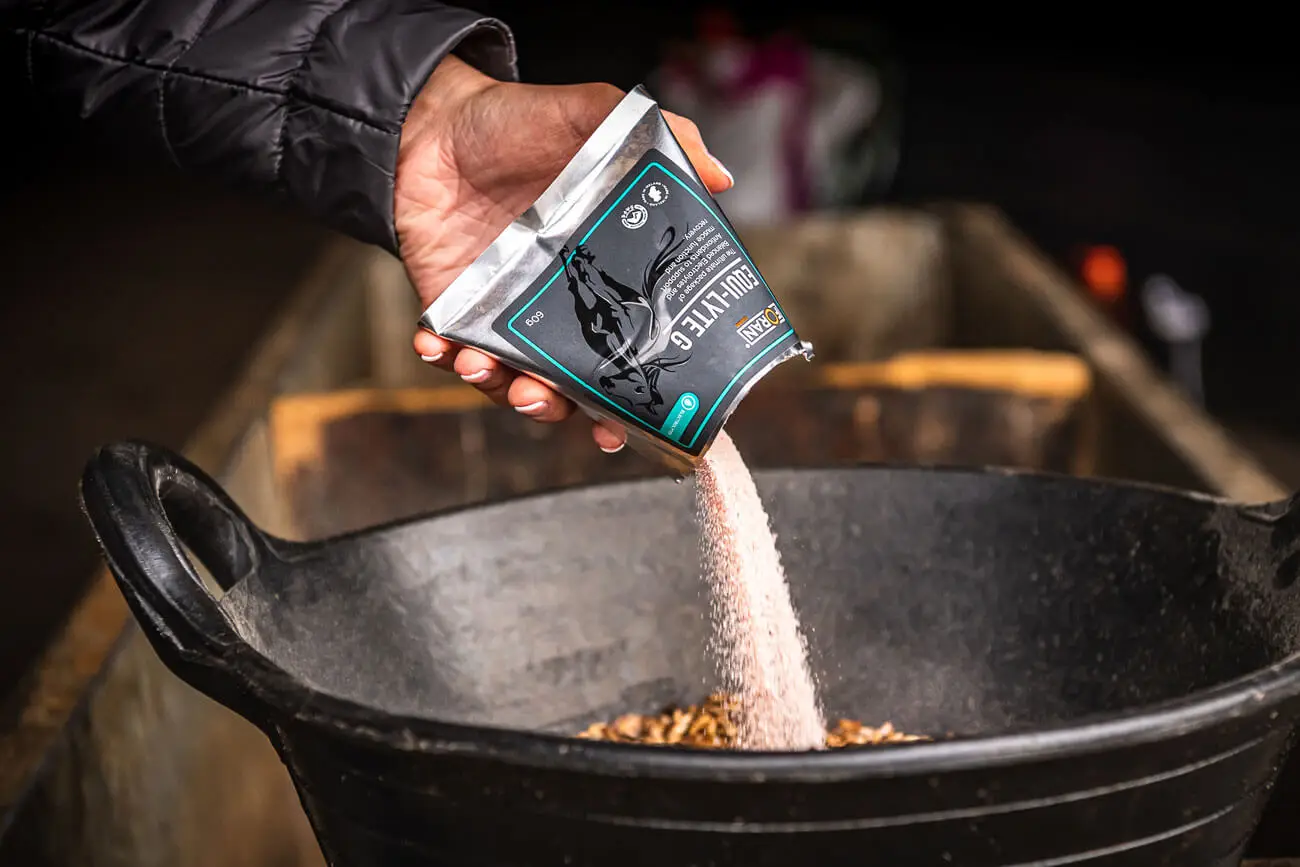
What are the signs of anhidrosis?
- Absence of sweating during exercise
- Patchy or reduced sweating
- Increased respiratory rate
- Increased rectal temperature with a failure to cool after exercise
- History of lethargy in hot weather
- In chronic cases, the skin will become dry and flaky
How can anhidrosis be diagnosed?
Horses suffering from anhidrosis will sweat much less than normal horses, or even not at all, after heavy exercise in a hot environment. To help diagnose anhidrosis, your vet may want to inject your horse’s skin with a drug that stimulates sweat production. By doing a series of injections with different concentrations of the drug, they can monitor your horse’s response and determine the degree of anhidrosis.
Why is it important for horses to sweat?
A horse’s main method of cooling itself during and after exercise is via the evaporation of sweat, 65-70% of body heat is dissipated in this way. The inability to sweat is therefore a very serious condition, particularly in horses undergoing periods of heavy exercise or training. During exercise, the body temperature increases rapidly, at about 1oC per minute. Without sweating to reduce and limit this temperature rise, there can be a critical elevation in core body temperature.
In extreme cases, this can lead to seizures, collapse, and even death. Even in less extreme cases, horses affected with anhidrosis will often show signs of prolonged heartrate and temperature after exercise and respiratory distress. This obviously affects the performance and well-being of affected horses.
Can anhidrosis be reversed?
While the condition and its risk factors are well recognised, advice on how to reverse the condition is varied. Interventions aimed at reversing anhidrosis include
1. Removing the horse from the hot and humid climate
Removing the horse from the hot and humid conditions is the only option known to completely reverse the condition. Re-acclimatisation takes some time, but when returned to a temperate climate, affected horses can regain their ability to sweat.
2. Electrolyte supplementation
Supplementing affected horses may help them maintain normal electrolyte levels.1 Equi-Lyte G is a powdered supplement containing key electrolytes including sodium, potassium, chloride and magnesium, that can be added to a horse’s daily feed.
Read more about the importance of electrolytes.
3. Vitamin E supplementation
Vitamin E is an antioxidant and is important for muscle function and recovery form work, as well as skin and overall health. Some studies have shown improvement in anhidrosis when horses are supplemented with Vitamin E.2,3 Foran Equine’s provides antioxidant action in a powdered formulation that can simply be sprinkled on feed daily.
4. Iodine supplementation
It has been suggested that anhidrosis is related to poor thyroid function. Although this link has not been scientifically proven, some success with iodine supplementation has been reported.
5. Amino acid supplementation
Supplementation with the amino acid, tyrosine has been reported to benefit some horses affected by anhidrosis.
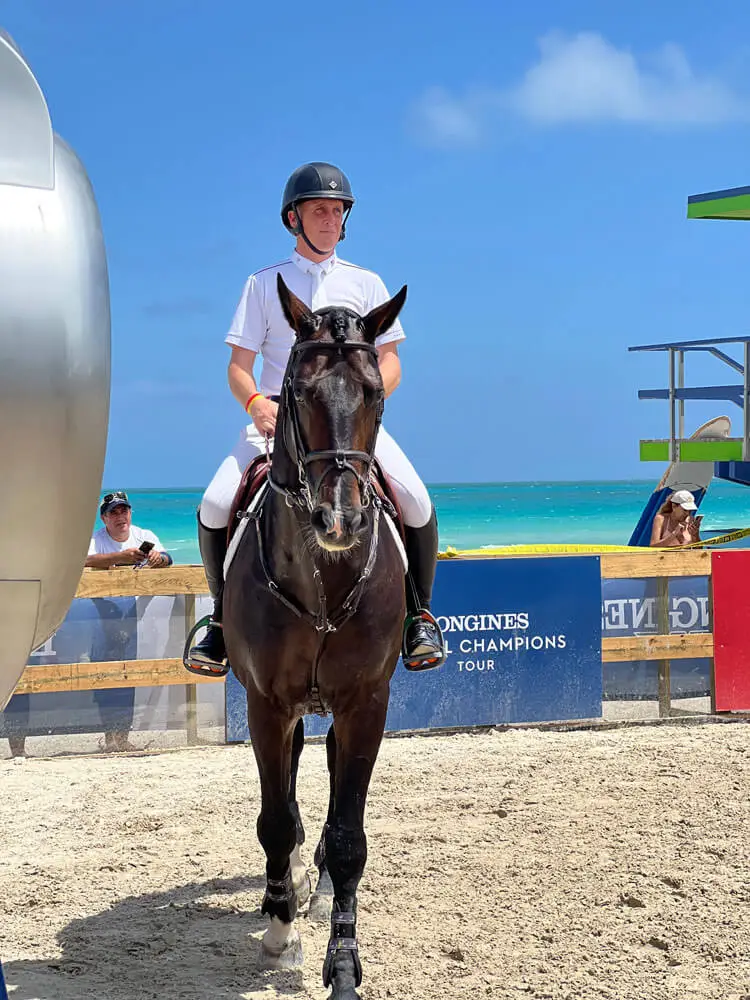
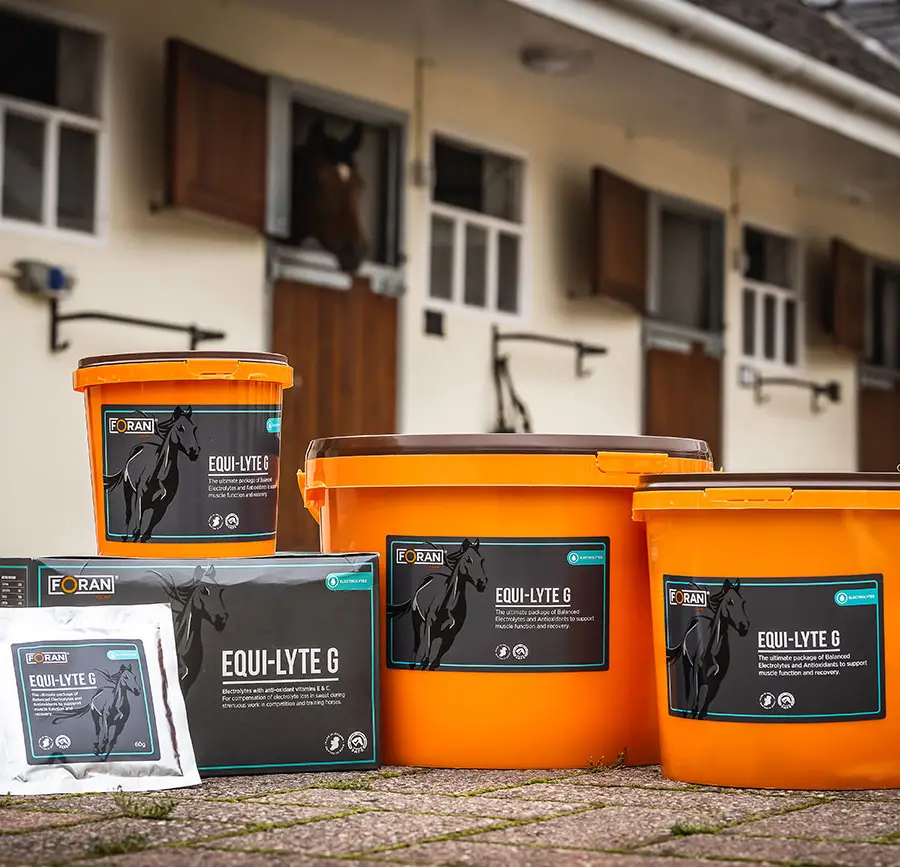
Can anhidrosis be managed?
Horses affected by anhidrosis that continue to exercise will require supportive actions aimed at minimising temperature:
1. Reduce environmental temperature and humidity exposure
Where possible, horses suffering from anhidrosis should be housed in cool, dry stables, with free access to cool water. Stable fans or air conditioning may also be beneficial. Affected horses should also only be exercised or turned out during the coolest times of the day and pasture turnout for these horses should be shaded where possible. Also consider changing to a high oil, low starch diet, as starches require metabolism by the body, which also produces internal heat.
2. Aid cooling after exercise
Cold hosing after exercise can also help to reduce body temperature quickly which can be particularly beneficial to these individuals.
For more information about products to help support your horse please contact the Foran Equine Team.
References:
- American Association of Equine Practitioners, ‘Understanding Anhidorsis’ web article, accessed on 06.10.22: https://aaep.org/horsehealth/understanding-anhidrosis
- Johnson, E.B., R.J. Mackay, and J.A. Hernandez. 2010. An epidemiologic study of anhidrosis in Florida. Journal of the American Veterinary Medical Association. 15:236(10):1091-1097.
- Zahoor, A., M.N. Manzoor, A.R. Usama, A. Ahmad, S. ur Rehman, and R.U. Khan. 2011. Epidemiology, electrolytes balance and treatment strategy of equine anhidrosis. Research Opinions in Animal and Veterinary Sciences. 1(1):4-7.
